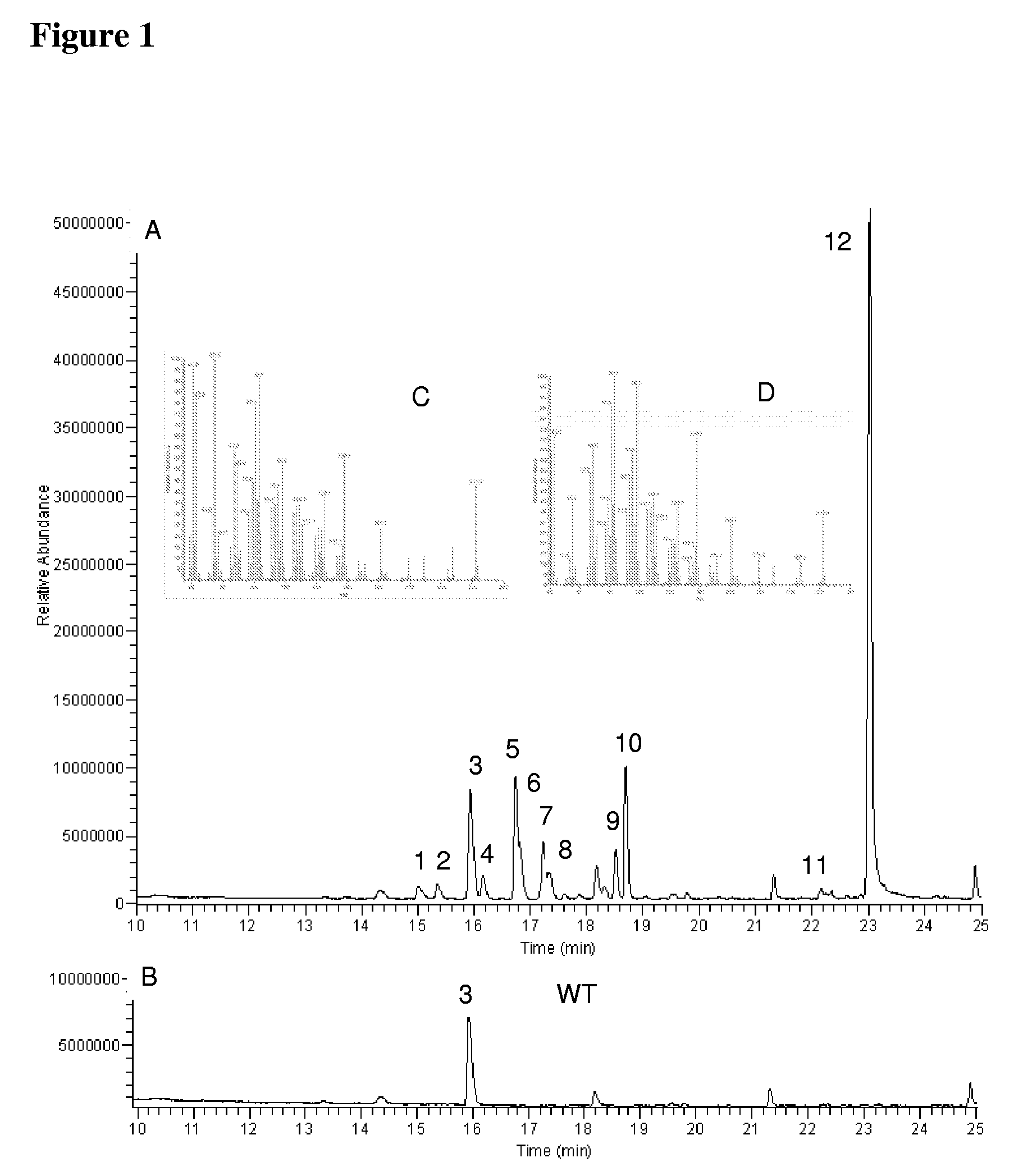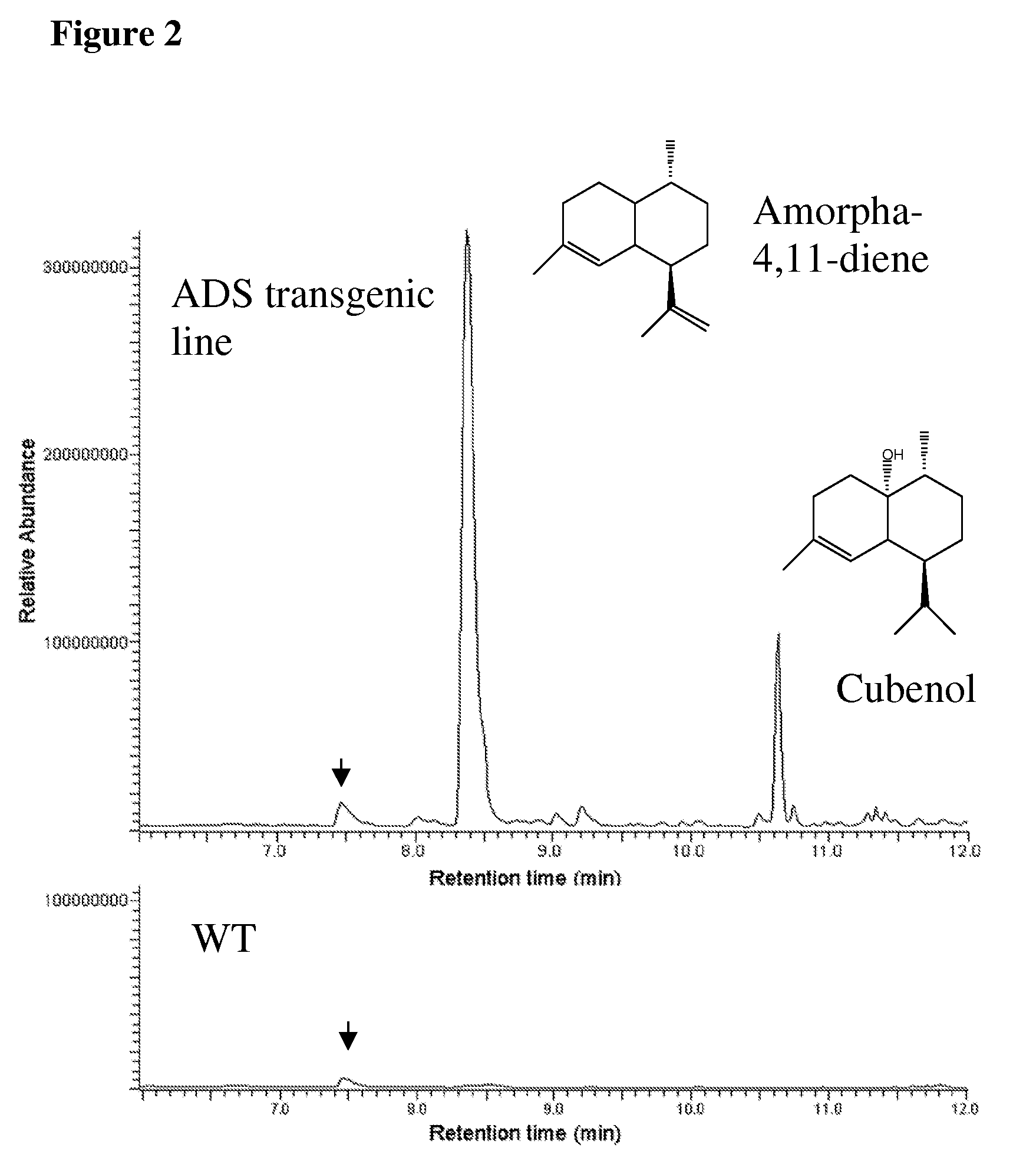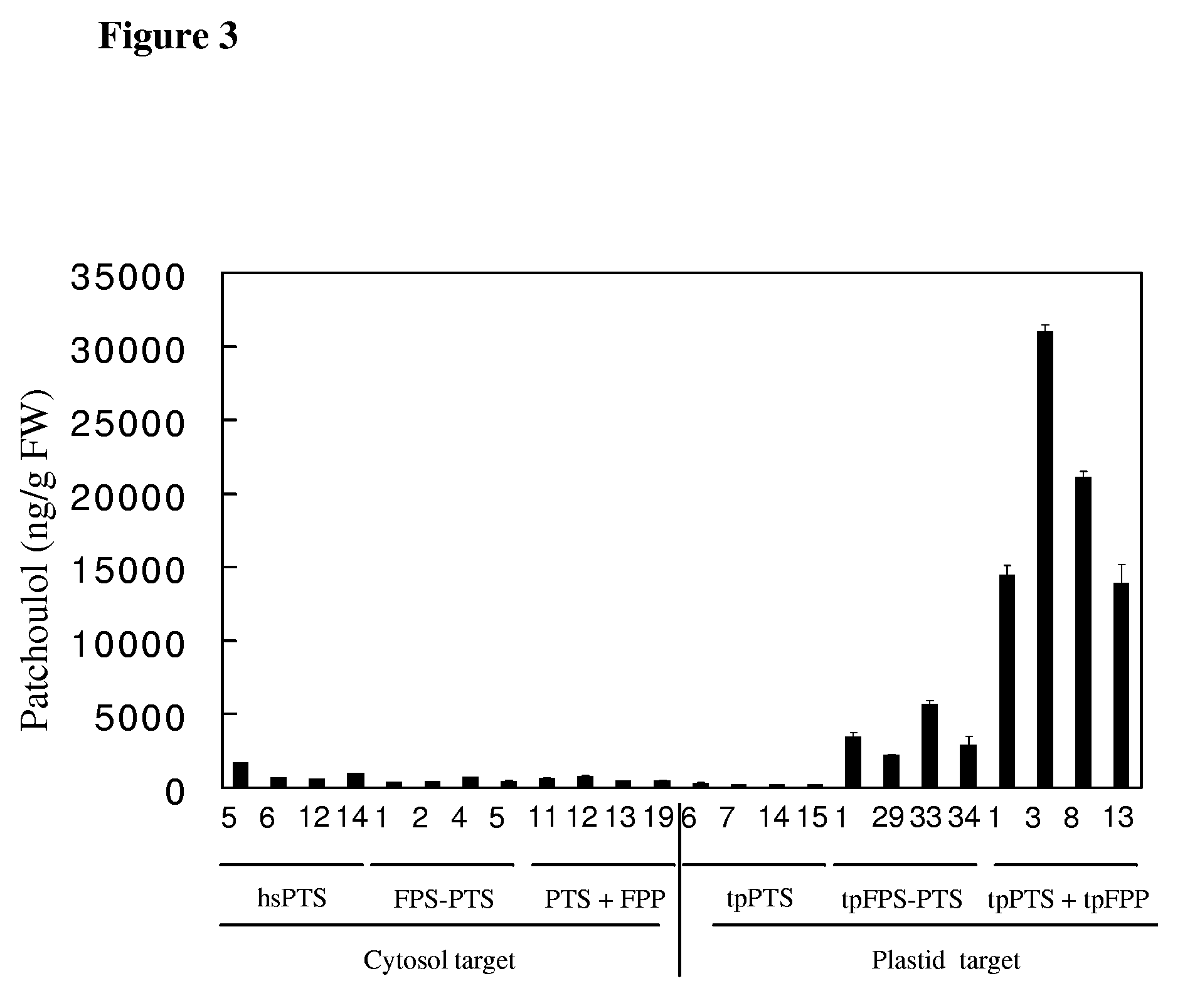Transformed plants accumulating terpenes
a technology of terpenes and plants, applied in the field of transformed plants, can solve the problems of complex synthesis of higher terpenes such as sesqui- and diterpenes
- Summary
- Abstract
- Description
- Claims
- Application Information
AI Technical Summary
Benefits of technology
Problems solved by technology
Method used
Image
Examples
examples
[0115]The following examples are intended to illustrate the invention without limiting the scope as a result. Methods and protocols of the examples are generally performed following standard protocols supplied by the manufacturer of specific materials or kits, or by following well-established protocols defined by Sambrook et al (1989) and Ausubel et al. (1987).
[0116]The attached sequence listings include nucleic acid sequences encoding sesquiterpene synthases and an avian farnesyl diphosphate synthase, coupled to transit peptide sequences.
[0117]The nucleotide sequence encoding a patchoulol synthase (bp187-bp1845) linked via a linker sequence to a plastid targeting sequence (bpp1-bp171) is named tpPTS (SEQ. ID. NO:1).
[0118]The nucleotide sequence encoding an avian farnesyl diphosphate synthase synthase (bp211-bp1314) linked via a linker sequence to a plastid targeting sequence (bp1-bp171) is named tpFPS (SEQ. ID. NO:2).
[0119]The nucleotide sequence encoding a fusion protein in which ...
examples 1-5
Construction of Recombination and Plant Transformation Vectors
[0125]The hygromycin selection marker (Hajdukiewicz et al., 1994) was chosen for creating a selection marker for transformed plants. New vectors were engineered with appropriate recombination cloning sites as described by Hartley et al. (2000).
example 1
Development of the pBDON Vector (FIGS. 8 and 11)
[0126]The pBI101 vector (Invitrogen, Carlsbad, Calif.) was digested with the restriction enzymes Sph1 and Sst1 and the DNA fragment corresponding to the plasmid vector (not including the RB border and NPTII gene cassette) was isolated by agarose gel purification (Sambrook et al., 1989) (13). In parallel, an attp recombination cassette including the ccdb gene and chloroamphenical resistance gene was amplified from the pDON221 vector (Invitrogen, Carlsbad, Calif.) using standard PCR conditions with primers Attp1-SstI-FW and Attp2-SphI-RV. The PCR amplified DNA fragment was restricted with the Sph1 / Sst1 enzymes, gel purified and ligated into the corresponding sites of the similarly digested pBI101 vector described above to yield the intermediate pBattp vector (14).
[0127]A hygromycin gene cassette was prepared in a 2-step process. First, the hygromycin gene and CaUTR (termination sequence) was PCR amplified from the pCAMBIA1301 (Cambia, Ca...
PUM
| Property | Measurement | Unit |
|---|---|---|
| Fraction | aaaaa | aaaaa |
| Fraction | aaaaa | aaaaa |
| Fraction | aaaaa | aaaaa |
Abstract
Description
Claims
Application Information
 Login to View More
Login to View More - R&D
- Intellectual Property
- Life Sciences
- Materials
- Tech Scout
- Unparalleled Data Quality
- Higher Quality Content
- 60% Fewer Hallucinations
Browse by: Latest US Patents, China's latest patents, Technical Efficacy Thesaurus, Application Domain, Technology Topic, Popular Technical Reports.
© 2025 PatSnap. All rights reserved.Legal|Privacy policy|Modern Slavery Act Transparency Statement|Sitemap|About US| Contact US: help@patsnap.com



